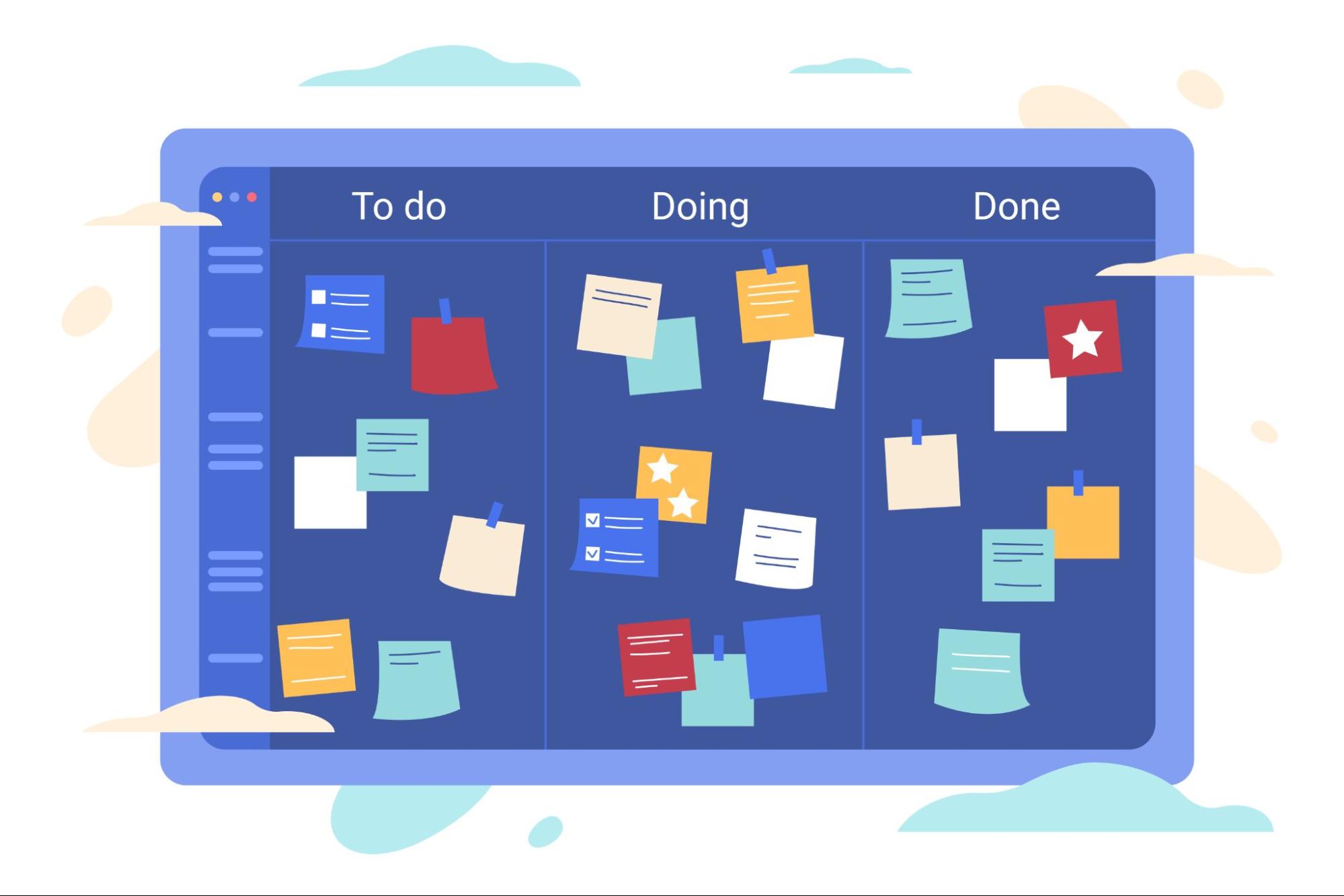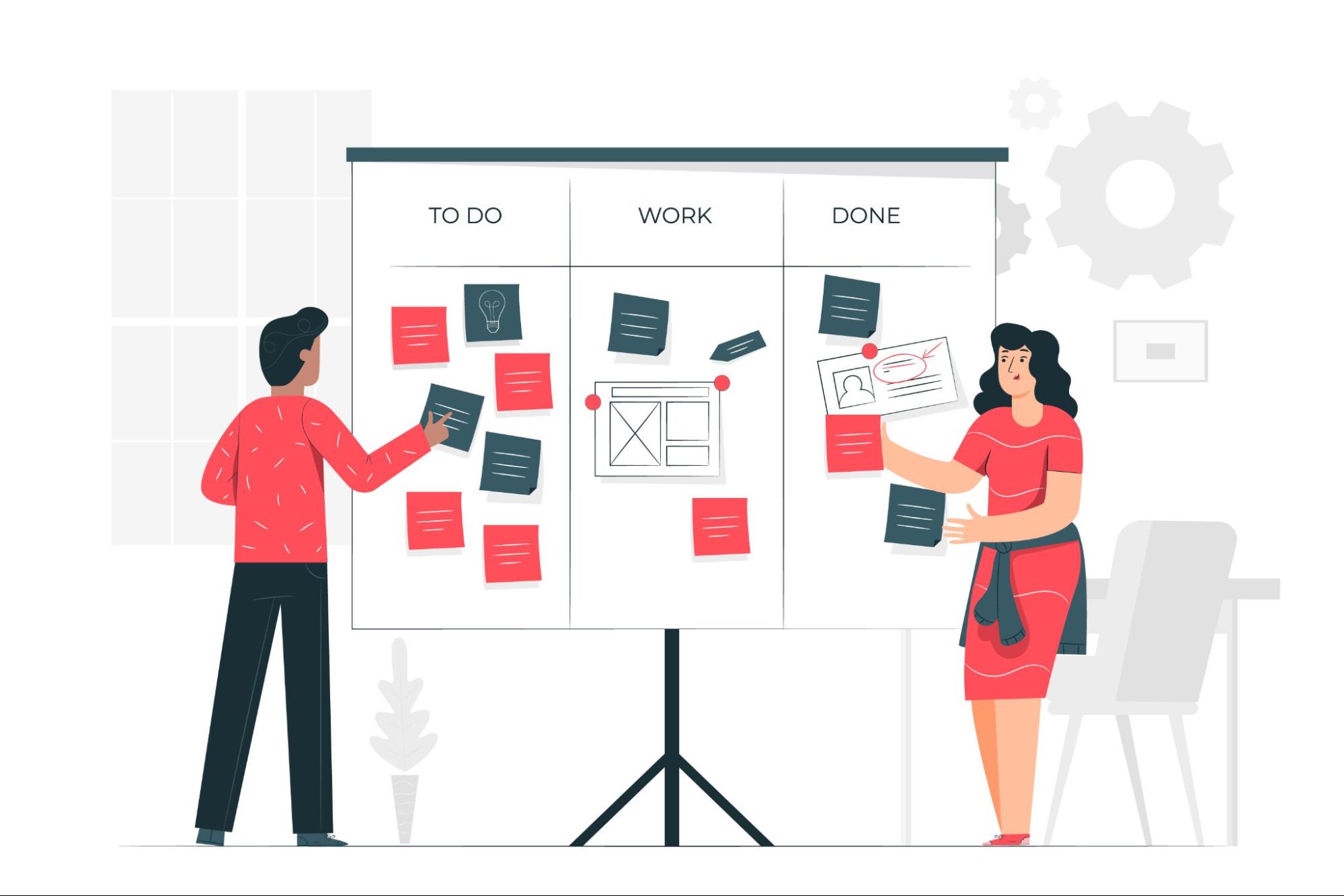Kanban Methodology: Comprehensive Guide to Effective Project Management with Kanban
Learn everything you need to know about Kanban methodology, including its principles, benefits, and how to implement it using monday.com
Start Free Trial
Learn everything you need to know about Kanban methodology, including its principles, benefits, and how to implement it using monday.com
Start Free Trial
Ask any project manager or director what determines a project's success, and they’ll likely say it’s working with committed individuals. Every project needs a dedicated champion. If that person loses interest, the project often falters. Maintaining enthusiasm hinges on presenting a clear vision of the end goal and making it feel achievable. This is where Kanban shines.
Keep reading to learn about Kanban project management, its core principles, benefits, and how you can use it for your projects with monday.com.

Kanban is a project management framework that embraces agile principles to help teams visualize their workflow and enhance efficiency. The Kanban method emphasizes real-time communication, complete transparency, and visual tracking of progress. Although it’s widely used in DevOps software development, Kanban is versatile enough for any business team.
Kanban originated in Japan in the 1940s. Taiichi Ohno, an engineer and businessman at Toyota, developed the initial Kanban system to improve manufacturing efficiency. This simple system evolved into a lean manufacturing approach designed to optimize processes, monitor inventory, and manage work at each stage of production.
The term "Kanban" means "signboard" or "visual signal" in Japanese. This concept is most commonly represented by a Kanban board, where Kanban cards display individual tasks grouped by their status, providing a clear visual overview of the workflow.
A Kanban board can be described as an evolved version of sticky notes and dry-erase markers: an organizational tool that keeps team members informed about task assignments, deadlines, and other relevant information in one visually intuitive place. It consists of cards and columns that represent individual tasks and their stages. For instance, the stages might include "Pending," "To-Do," "In Progress," and "Completed." Each card is assigned to a team member responsible for completing the task and moving the card through the columns until the task is finished.

Whether using a physical board with Post-it notes or a digital board within project management software, any Kanban board will have the following components:

Here are the four key principles of Kanban project management:
Kanban's adaptability allows it to be seamlessly integrated into existing workflows without causing disruption. Implementing Kanban should be straightforward—overlay it on your current processes and observe how it functions over time.
Instead of enacting sweeping changes, maintain your current production levels and methods while gradually introducing minor adjustments at a manageable pace. This approach minimizes internal resistance and fosters a smoother transition.
Kanban respects existing processes and roles within the organization. It allows the project team to decide where changes are necessary and implement them gradually. This ensures that the current workflow and roles are preserved and improved upon as needed.
An effective Kanban system promotes continuous improvement at all organizational levels. Leadership and innovation can emerge from any team member, encouraging everyone to contribute ideas, implement significant changes, and enhance the efficiency and effectiveness of the workflow and product delivery.

Now that we’ve explored the core principles of Kanban let's dive into how these principles are put into action. Here are the six essential practices of an effective Kanban system:
Kanban excels when there is a visual representation of the workflow, often through a Kanban board filled with cards that can be moved around. This can be a physical board with sticky notes or an electronic Kanban system. Visualizing the process facilitates transparency and provides your team with a clear method for managing tasks. Platforms like monday.com offer built-in Kanban data visualization, ensuring your team always has access to the board and its cards.
Kanban operates as a pull system, encouraging teams to finish current tasks before starting new ones. This helps maintain focus and communicates to stakeholders that the team has a limited capacity that should be respected. Ideally, each team member should handle no more than one or two tasks at a time. Once a task is completed, they can pull a new task from the "To-Do" column into "In Progress."
A critical component of Kanban is continuous monitoring and improvement of the workflow. This involves identifying bottlenecks and tracking how long tasks remain in various stages. If tasks are piling up or getting stuck, adjustments are needed. Over time, this practice enhances the team’s flow and makes the delivery process more predictable and efficient.
Defining and communicating process policies clearly is vital for smooth operations. This involves creating common checklists for different types of tasks, defining what constitutes task completion, detailing the purpose of columns or swimlanes, setting rules for when to pull cards, and establishing acceptable WIP limits. Clear process policies ensure everyone understands how to work effectively within the system.
Incorporating feedback loops is crucial for an effective Kanban system. Regular feedback allows the team to quickly identify issues and make necessary adjustments, promoting a culture of "failing fast and often." This approach helps teams course-correct early and often, ensuring they are on the right track. Regular process reviews and tracking key metrics are effective ways to establish feedback loops.
Kanban encourages continuous improvement and adaptation using the scientific method. This involves forming hypotheses, testing them, and making changes based on the outcomes. By iterating through this process, the system becomes more robust and effective over time, leading to significant, positive impacts on workflow and productivity.

Implementing Kanban project management offers several key advantages:
Deciding whether to use a Kanban tool for project management depends on various factors, including team size, preferences, organizational structure, and project specifics. Here are some questions to consider during your decision-making process:
While Kanban is widely applicable across various industries and disciplines, it is particularly effective for organizations with continuous workflows, such as marketing, events, or publishing. Understanding your team's needs and the nature of your projects will help determine whether a Kanban tool is the right fit for your organization's project management approach.

Creating a Kanban board in monday.com is simple and efficient. Follow these steps to set up your Kanban workflow:
Start by creating a new board in your monday.com account. Click on the "+ Add" button on the left pane of your screen and select "New Board." Alternatively, import a board from Excel, Google Sheets, or Trello, or choose from pre-prepared templates.
To incorporate the Kanban view into your board, click on the "+" option at the top of your board. It will say "Add View" when you hover over it. Select "Kanban" from the menu. Alternatively, access "Board Power-Ups" in the upper right corner, choose "Board Views," and select "Kanban" from the Views Center.
Customize your Kanban view by clicking on the cogwheel icon at the top right of your view to open the Settings menu. Follow these steps:
Choose the status columns you want to showcase in your Kanban view.
Select one or more file columns to be displayed as covers on your Kanban cards.
Choose the column information from your board to be displayed directly on your Kanban cards.
Click the "Divide by groups" option to view your Kanban cards according to the groups they belong to on your board.
Once your Kanban board is set up, focus on task completion. As tasks progress, move cards along the workflow. For example, a completed draft can be moved to the Review column for editing. Use comments to communicate necessary changes or feedback.
Project managers can track the average time cards take to move through the workflow and monitor task completion rates over specific time frames. For more comprehensive metric measurements, utilize dynamic templates on monday.com.
With monday.com's intuitive interface and customizable features, creating and managing a Kanban board is streamlined and effective. This facilitates efficient workflow management and collaboration within your team.

Using monday.com as the cornerstone of your project management offers several compelling advantages, especially when it comes to utilizing Kanban boards:
Embarking on a successful project requires a dedicated champion armed with the right tools. In the realm of project management, Kanban stands out as a champion for numerous teams, offering streamlined workflow management and enhanced productivity. With monday.com, you're not just getting a Kanban board—you're tapping into a comprehensive project management technology that connects all teams within your organization. Utilize our Kanban board template to kickstart your journey toward efficient project management.
Absolutely! Kanban is a versatile project management methodology suitable for both small and large projects. Its adaptable framework allows teams to customize it according to their project's size and requirements, making it effective and scalable across various contexts.
Yes, Kanban is highly compatible with remote or distributed teams. Its visual nature and emphasis on transparency and collaboration make it particularly well-suited for remote work environments. Online Kanban tools and digital boards further enhance Kanban's effectiveness by providing real-time updates and facilitating seamless communication among team members.
Kanban boards clearly represent each team member's workload and task status. This makes it easy for managers to track team progress and identify bottlenecks or areas needing attention. By visualizing work in progress, Kanban helps managers monitor team productivity and ensure tasks are progressing smoothly.

Most mature requirements management application for Jira.